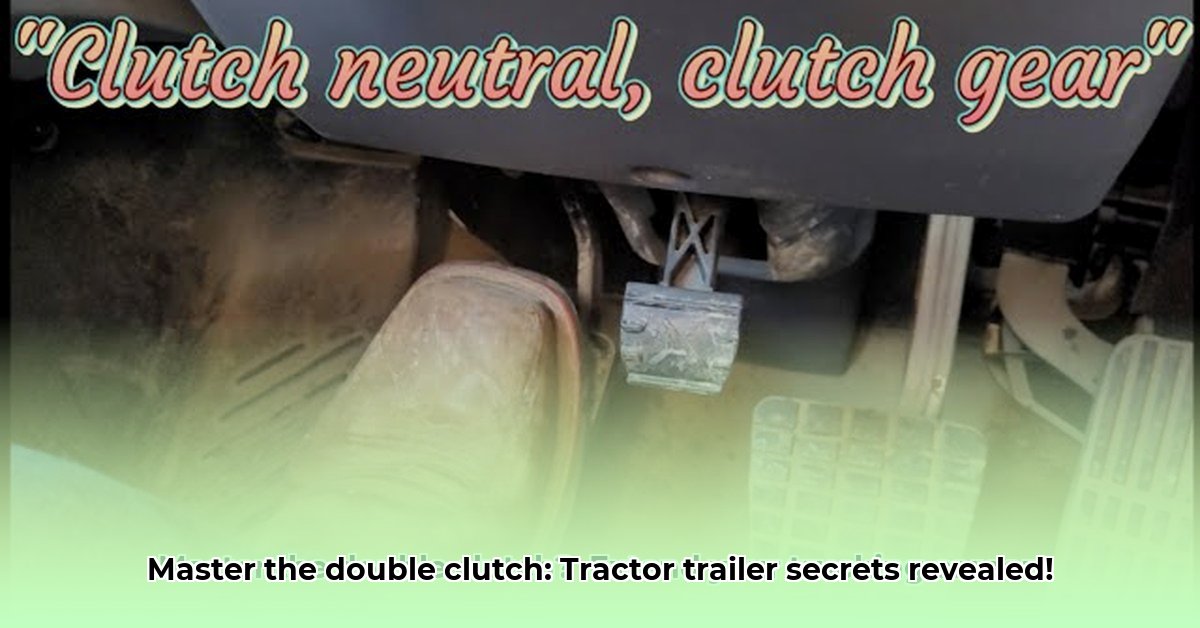
How to Double Clutch a Tractor-Trailer: A Step-by-Step Guide
Want to become a more efficient and skilled truck driver? Mastering the double-clutch technique can significantly improve your fuel economy, extend the life of your transmission, and create a smoother driving experience—even in today's world of automated transmissions. This guide provides a comprehensive, step-by-step approach to help you master this valuable skill. For more information on tractor-trailers, check out this helpful resource: Tractor Trailer Info.
Safety First: Prioritizing Safe Practice
Before you begin, prioritize safety. Practice in a large, empty parking lot or a safe, controlled environment, ideally under the supervision of an experienced driver. Improper double clutching can damage your transmission, resulting in costly repairs and potential accidents. Remember, safety always comes first. Don't risk it!
Step-by-Step Double Clutching Instructions
This detailed guide helps you through every stage, from the initial clutch depression to the final acceleration.
Fully Depress the Clutch: Push the clutch pedal all the way to the floor. This completely disengages the engine from the transmission.
Shift to Neutral: Carefully move the gear shifter into the neutral position. You should feel a distinct click indicating a successful shift.
Rev the Engine: Briefly increase the engine's RPM (revolutions per minute) to a speed appropriate for the next gear. This crucial step synchronizes the engine speed with the transmission, preventing grinding and ensuring a smooth shift. The required RPM varies depending on the gear you're shifting into and other factors such as the load you're carrying and the grade of the road.
Partially Engage the Clutch (Optional): Some experienced drivers find partially engaging the clutch helpful before shifting into the new gear. This can lead to a smoother transition. This is an advanced technique that should only be attempted after mastering the basic steps.
Select the Next Gear: With the engine revving at the appropriate speed, firmly but smoothly shift into the next higher gear.
Fully Engage the Clutch: Smoothly release the clutch pedal, allowing the engine to engage with the wheels. Avoid sudden movements; a gradual release is critical.
Accelerate: Gradually apply the accelerator pedal, feeling the truck smoothly gain speed.
Troubleshooting Common Issues
Despite following the steps carefully, certain problems can occur; let's troubleshoot some potential issues:
Grinding Gears: This generally indicates an improper synchronization of engine speed and gear selection. Refine your engine revving technique to match the speed required for the next gear.
Stalling: If your truck stalls, you likely either didn't rev the engine high enough or released the clutch too quickly. Focus on smoother clutch engagement.
Don't be discouraged by initial difficulties. Consistent practice is key.
Refining Your Technique: Practice and Patience
Mastering double clutching requires patience and consistent practice. Begin at low speeds to build confidence and gradually increase speed as your skills improve. Focus on smooth, controlled movements rather than speed. The goal is a flawless, seamless shift.
Did you know that consistent practice can improve your fuel economy by up to 15%? This makes double clutching an investment in both your driving skills and your budget.
Advanced Techniques: Downhill Driving and More
Once comfortable with the basics, you can explore advanced techniques. Downhill driving, for instance, requires careful coordination of engine braking and double clutching. These advanced techniques are best learned under the guidance of an experienced professional.
Conclusion: Embracing the Double Clutch
Mastering the double-clutch technique offers numerous advantages. It enhances fuel efficiency, extends transmission life, and provides a smoother ride. While less critical with modern automated transmissions, the skill remains invaluable for seasoned drivers and enhances overall control and efficiency. Consistent practice and proper technique are key to mastering this skill and reaping those benefits. Consider professional training to accelerate your learning process.